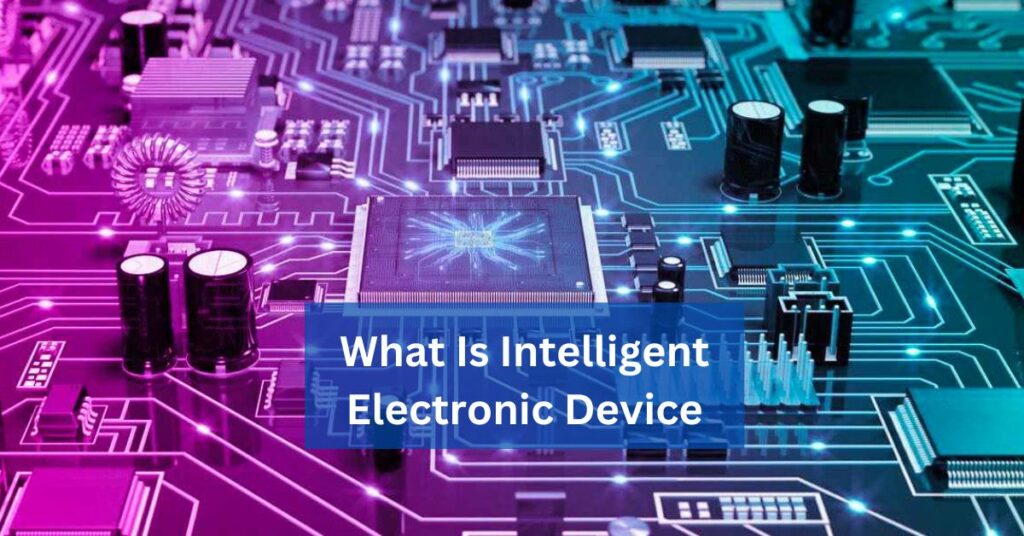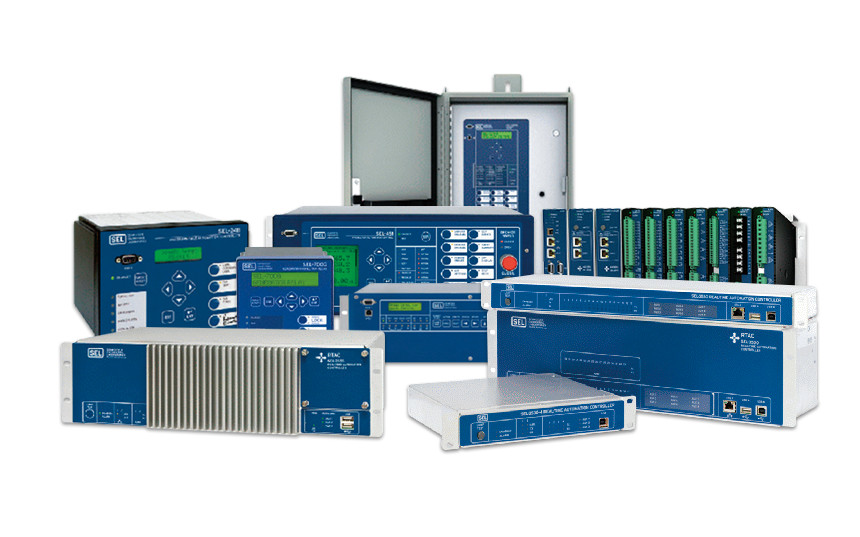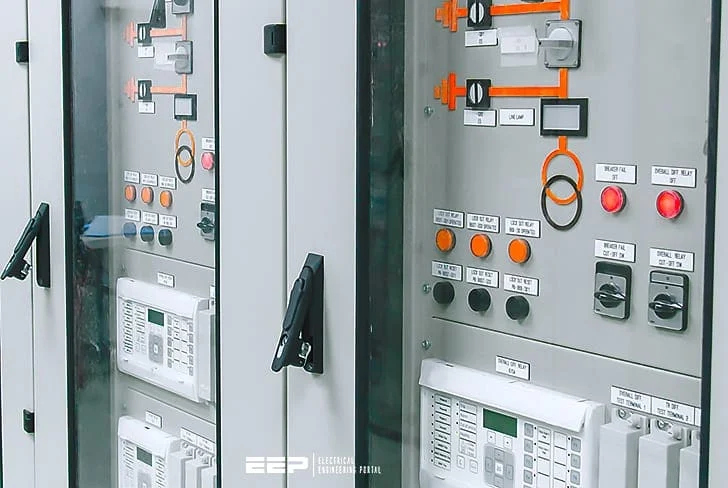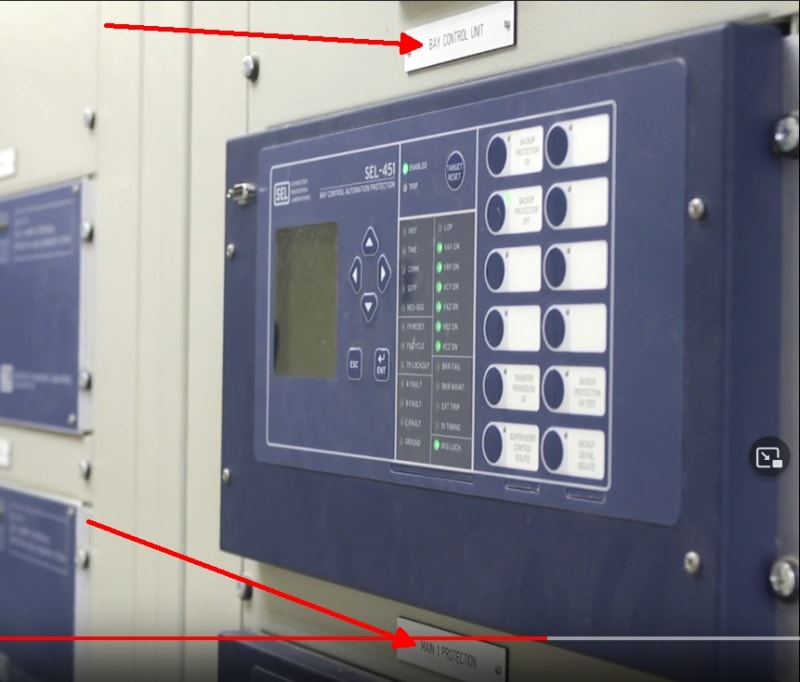What Is Intelligent Electronic Device – A Comprehensive Guide!

In the complex world of power systems, Intelligent Electronic Devices (IEDs) take on many roles beyond basic monitoring and control. These devices, with their smart computing abilities and advanced algorithms, play a crucial part in making today’s electrical grids work better, be more reliable, and respond faster to changes.
1. Real-time Monitoring and Control: The Sentinel of Power Systems
In simple terms, Intelligent Electronic Devices (IEDs) play a crucial role in keeping a close eye on the health of the power grid. Imagine them as vigilant guardians, always watching over things like voltage, current, frequency, and temperature in real-time. This constant monitoring gives operators a complete picture of how the power grid is doing, allowing them to quickly tackle any issues that pop up.
When it comes to control, IEDs are like smart decision-makers. They follow preset plans and use special rules to manage different parts of the power system. For example, if there’s too much demand for electricity, IEDs can make the power grid more stable by shedding some load. If there’s a problem, like a fault, IEDs can automatically isolate it to stop the issue from spreading. In simple words, IEDs bring a high level of accuracy and speed in managing the power system, something that older systems find challenging to match.

2. Protection Mechanisms: Safeguarding the Integrity of Power Systems
Protection is a paramount aspect of power systems, and IEDs excel in this domain. Equipped with intelligent algorithms, these devices can rapidly detect abnormal conditions such as short circuits, overcurrent, or voltage fluctuations. When anomalies are identified, IEDs trigger protective actions, isolating the affected part of the system to prevent further damage.
The ability of IEDs to make split-second decisions based on real-time data significantly reduces the impact of faults and enhances the overall resilience of power systems. This proactive approach to protection ensures a more robust and secure electrical infrastructure.
3. Automation for Enhanced Efficiency: Streamlining Operations
One of the standout features of IEDs is their role in automation. By executing predefined sequences of operations, these devices automate a range of tasks within power systems. This includes but is not limited to:
Load Shedding: IEDs can automatically shed non-critical loads during periods of high demand or emergency situations, preventing grid instability and potential blackouts.
Fault Isolation: In the event of a fault, IEDs swiftly identify the affected section and isolate it from the rest of the system, minimizing the impact and speeding up the restoration process.
Restoration: IEDs contribute to the automatic restoration of power after a fault has been cleared, reducing downtime and improving overall system reliability.
Automation not only enhances the efficiency of power system operations but also reduces the reliance on manual interventions, mitigating the risk of human error and ensuring a more responsive grid.
4. Data-Driven Decision-Making: Insights for Optimization
IEDs generate a vast amount of data through continuous monitoring and analysis of power system parameters. This data becomes a valuable resource for operators, engineers, and decision-makers. Through advanced analytics, historical performance data can be leveraged for:
Predictive Maintenance: IEDs contribute to predictive maintenance strategies by identifying potential issues before they escalate. This approach minimizes downtime, extends the lifespan of equipment, and optimizes maintenance schedules.
Asset Management: The data collected by IEDs aids in comprehensive asset management, allowing for informed decisions regarding upgrades, replacements, or expansions of power system components.
Performance Optimization: By analyzing data trends, operators can optimize the performance of power systems, making adjustments to enhance efficiency, reduce energy losses, and adapt to changing demand patterns.
5. Seamless Integration with Substation Equipment: Creating a Unified Ecosystem
The teamwork between Intelligent Electronic Devices (IEDs) and various substation tools is crucial for their effectiveness. IEDs talk smoothly with things like circuit breakers, transformers, relays, and meters. It’s like they form a team where information flows together, helping them work in harmony and making sure different parts of the power system can understand each other.
This teamwork also makes it easy to bring new technology to old substations. So, we can use IEDs in places that already have power equipment without making big changes. This flexibility means we get the advantages of IEDs without having to do a lot of extra work, making them a practical choice for both new setups and improving existing power systems.
Real-World Experiences With Intelligent Electronic Devices:
1. Enhanced Reliability:
In the world of power systems, making sure everything works smoothly is really important. Using Intelligent Electronic Devices (IEDs) has made electrical grids much more reliable. These devices are like smart helpers – they can quickly find problems using their clever programs and fast thinking.

For example, if there’s suddenly too much electric current in a power line because something went wrong, IEDs can notice it right away. They then do pre-planned actions, like stopping the problem area or turning on backup plans. This quick action stops the issue from spreading and keeps the power on, making sure the whole system is reliable and works well.
2. Improved Fault Response:
The ability of IEDs to respond rapidly to faults is a key factor in reducing the impact of disruptions in power systems. Traditional methods of fault detection and response often involve manual intervention and can be time-consuming. IEDs automate this process, significantly decreasing the time it takes to identify and isolate faults.
In practical terms, this means that when a fault occurs, IEDs can instantaneously analyze the data, determine the location and nature of the fault, and take appropriate actions to isolate the affected area. This not only minimizes the duration of outages but also enhances the system’s ability to recover swiftly, leading to improved overall service reliability.
3. Data-Driven Decision-Making:
The data generated and analyzed by IEDs serve as invaluable resources for decision-makers in the power industry. By collecting and storing a wealth of information on the performance and health of power system components, IEDs enable data-driven decision-making.
For instance, consider a transformer within a substation equipped with IEDs. These devices continuously monitor various parameters such as temperature, load, and voltage. The historical data collected by IEDs allow engineers and operators to perform predictive analytics.
By identifying patterns and trends, they can predict when the transformer might require maintenance or when it is approaching the end of its operational life. This proactive approach to maintenance minimizes unplanned downtime, optimizes resource utilization, and extends the lifespan of critical assets.
4. Seamless Integration:
Imagine a situation where a company that manages electricity (a utility) wants to make its power station more modern and efficient. They don’t want to completely change everything; they just want to add some smart features for better protection and control.
Here’s where Intelligent Electronic Devices (IEDs) come in. These devices are like smart helpers that can easily fit into the existing power setup without causing a lot of disruption. They can connect to things like circuit breakers and relays, enhancing the power station’s abilities without the need for big and complicated changes.
So, instead of tearing everything down and starting from scratch, the utility can simply add these IEDs to their current system. It’s like upgrading a computer with new software without having to buy a completely new one.
The great thing is that these IEDs can talk and work well with the other equipment in the power station. They create a teamwork atmosphere, making sure everything runs smoothly together. This way, the utility can enjoy the benefits of the latest technology without the hassle of a massive reconstruction project. It’s like giving the power system a smart boost without the need for a total makeover!
5. User Experiences and Operator Benefits:
Operators and engineers working with power systems have experienced firsthand the benefits of incorporating IEDs into their daily operations. The user-friendly interfaces of these devices provide intuitive access to real-time data, system status, and event logs. This accessibility enhances situational awareness, allowing operators to make informed decisions swiftly.
In addition, the automation capabilities of IEDs streamline operational tasks. Tasks that once required manual intervention can now be executed automatically, reducing the workload on operators and minimizing the risk of human error.
This not only enhances the overall efficiency of power system operations but also contributes to a safer and more reliable working environment for operators.
6. Scalability and Future-Proofing:
IEDs offer scalability, allowing utilities to adapt to evolving needs and technology. As power systems expand or undergo changes, additional IEDs can be seamlessly integrated to meet new requirements. This scalability ensures that investments in IEDs remain relevant and effective in the face of changing operational demands and advancements in technology.
Consider a utility that initially deploys IEDs for basic protection functions. As the need for more advanced monitoring and control capabilities arises, additional IEDs can be incorporated without disrupting the existing setup.
This scalability provides a future-proofing mechanism, allowing utilities to stay abreast of technological advancements and respond to emerging challenges in the dynamic landscape of power systems.
Also read: Murf – Unleashing Revolutionizing AI-Powered Voice Generation!
Unlocking Advanced Functions Of Intelligent Electronic Devices (Ieds) – A Closer Look!
Delving Deeper into the Capabilities that Propel Power Systems into the Future
While the foundational functions of Intelligent Electronic Devices (IEDs) have already revolutionized power systems, it’s crucial to explore the advanced capabilities that make these devices indispensable in shaping the landscape of electrical engineering. As someone deeply immersed in the world of IEDs, I am excited to shed light on the advanced functions that elevate these devices from essential components to strategic assets in the quest for smarter, more efficient energy grids.
1. Adaptive Protection Algorithms: A Dynamic Shield Against Anomalies
Beyond basic fault detection, IEDs employ adaptive protection algorithms that continuously evolve and adjust to the dynamic conditions of power systems. These algorithms analyze the behavior of the system in real-time, allowing IEDs to tailor their response based on the specific characteristics of the detected anomalies. This adaptive approach enhances the accuracy and responsiveness of protection mechanisms, ensuring optimal performance even in rapidly changing operational scenarios.
2. Synchrophasors for Precision Monitoring: Unveiling the Power of Time-Synchronized Data
One of the advanced features that set IEDs apart is their ability to provide synchrophasor measurements. Synchrophasors are time-stamped measurements of voltage and current that are synchronized across different points in the power system.
This time-synchronized data offers a comprehensive view of the system’s dynamic behavior, enabling precise monitoring of voltage and frequency variations. The integration of synchrophasors enhances situational awareness, allowing operators to make informed decisions based on accurate, synchronized information.
3. Fault Location Identification: Pinpointing Issues with Precision
IEDs equipped with advanced fault location identification capabilities play a pivotal role in reducing downtime and expediting restoration processes. By analyzing the characteristics of detected faults, these devices can accurately pinpoint the location of the fault within the power grid. This information is invaluable for field crews, enabling them to swiftly identify and address issues, ultimately minimizing service disruptions and improving overall system reliability.
4. Cybersecurity Measures: Safeguarding Critical Infrastructure
As power systems become increasingly interconnected, the importance of cybersecurity in IEDs cannot be overstated. Advanced IEDs incorporate robust cybersecurity measures to protect against potential threats and vulnerabilities. Encryption, authentication protocols, and secure communication channels are integral components of these measures, ensuring the integrity and confidentiality of critical data. The implementation of cybersecurity features not only safeguards the operation of power systems but also enhances the resilience of the overall energy infrastructure.

5. Wide-Area Monitoring and Control: Coordinating Across the Grid
The ability of IEDs to monitor and control wide areas of the power grid distinguishes them as key players in ensuring system stability. Wide-area monitoring involves the analysis of data from geographically dispersed points, allowing operators to assess the overall health of the interconnected grid. IEDs with wide-area control capabilities can execute coordinated actions across different locations, contributing to the stability and resilience of the entire power system.
6. Predictive Maintenance and Diagnostics: Maximizing Equipment Lifecycle
IEDs are not just reactive; they are proactive in ensuring the longevity of power system equipment. Through advanced analytics and machine learning algorithms, these devices enable predictive maintenance and diagnostics. By analyzing historical performance data and identifying patterns indicative of potential issues, IEDs assist in predicting equipment failures before they occur. This proactive approach minimizes downtime, reduces maintenance costs, and optimizes the lifecycle of critical assets.
Frequently Asked Questions About Intelligent Electronic Devices:
1. How do Intelligent Electronic Devices contribute to the reliability of power systems?
IEDs enhance reliability by swiftly detecting and responding to faults. Through automated actions, they isolate problematic sections, preventing the spread of disruptions and minimizing downtime.
2. Are Intelligent Electronic Devices compatible with existing power infrastructure?
Yes, IEDs are designed to seamlessly integrate with various substation equipment. This compatibility ensures that they can be deployed in existing infrastructure without significant modifications.
3. What role do IEDs play in automation within power systems?
IEDs are at the forefront of automation, executing predefined logic and algorithms for tasks such as load shedding, fault isolation, and restoration. This automation improves efficiency and reduces response times during critical events.
4. How do Intelligent Electronic Devices communicate with each other and with SCADA systems?
IEDs utilize advanced communication protocols to establish connections with each other and with SCADA systems. This communication network enables real-time monitoring and control of power system parameters.
5. Can IEDs be retrofitted into existing power infrastructure, or are they only suitable for new installations?
IEDs are designed to be adaptable. They can be retrofitted into existing power infrastructure, allowing for the integration of advanced capabilities without the need for extensive overhauls.
Conclusion:
Intelligent Electronic Devices are like leaders in making things smarter and better. When we use them, we’re taking a big step toward having a more intelligent and strong energy system.
They’re really good at handling lots of information and talking easily with other devices. In the world of electrical engineering, they’re the ones leading the way to exciting new changes.
Read more:






